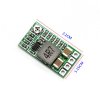Would we instead start to see SATA SSDs, that could take 12V from the SATA power plug? Or 12V / 5V, and convert from either/both? Is there enough room on a SATA SSD PCB to down-convert 12V to 5V or 3.3V? (*If they're already down-converting from 5V to 3.3V internally, would it be hard to accept 12V input as well, and down-convert that too?) I guess I don't have a good idea how much PCB space that it would take. (*I know that regular 3.5" HDDs take 12V for the spindle motor, and 5V for the electronics, but I don't know if they down-convert at all.)
Edit: I guess, lastly, if the last bastion of SATA drives, SATA SSDs, got to be 12V-input only, alongside 12V-only output ATX PSUs, couldn't they then simplify the SATA connector, to route both data AND 12V power from the mobo? Could they simply use the same singular SATA data cable, to then carry drive power as well as data signals, and skip requiring connecting the SATA power connector? (It might physically be present, for chassis/legacy reasons, but electrically unused?) Basically, rather than connect SATA data to mobo, and SATA power to PSU, connect PSU to mobo, and route 12V to the SATA data connector sockets, and then plug SATA data from mobo to drive, also carrying 12V power to the drive?




